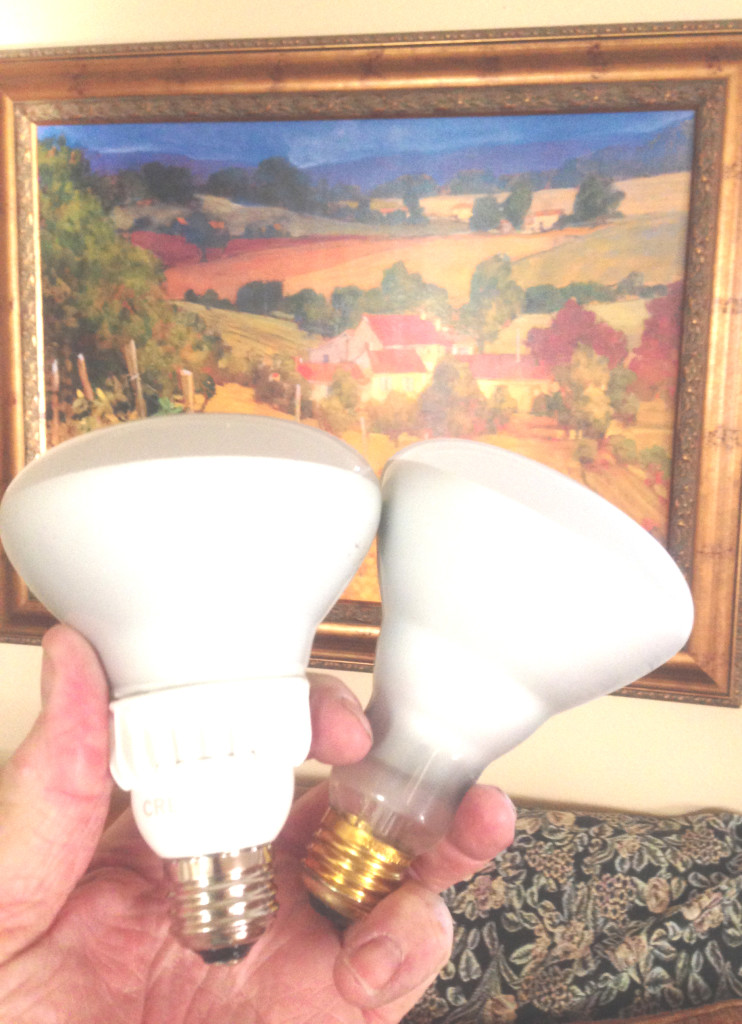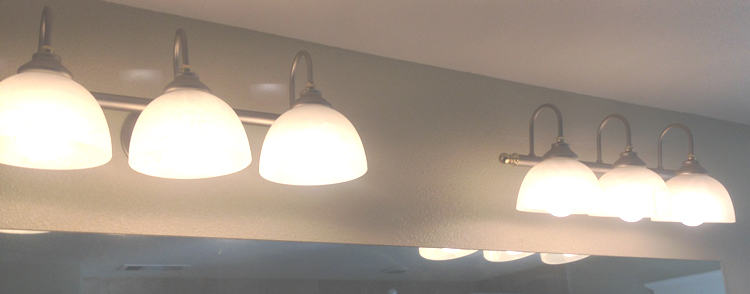
BENICIAN Ken Paulk swapped out all his old incandescent bulbs and replaced them with LED lights (above, right) — about 120 in all. He said he expects his $1,000 investment to pay for itself in 10 to 11 months. Courtesy photos
■ Homeowner switches incandescents to light-emitting diode bulbs
What happens to a power bill when someone changes all his lighting to energy-saving bulbs?
Benicia resident Kenneth Paulk decided to discover the answer for himself.
Paulk, whose involvement in city activities has ranged from being on the Parks, Recreation and Cemetery Commission to membership on Benicia Main Street’s board to running for city treasurer, recently turned his attention to conservation.
He’s decided to run an experiment on his own, to see whether he and other residents could cut their power bills while saving energy one light-emitting diode (LED) bulb at a time.
Or, in Paulk’s case, a lot of bulbs at a time.
The Texas native and Herald food columnist spent $1,000 on new bulbs after a few trips to Home Depot, where he also works.
“My electricity bill averages $147 a month,” he said.
“I expect it to go down to 50 bucks.”
If his estimates are accurate, he said, he will recoup his investment in 10-11 months.
And from then on, he said he expects to save in the vicinity of $100 a month on power.
“A return on your investment in 10 months? Whoever heard of that?” he said.
To make the switch, Paulk bought 24 60-watt Cree bulbs, a dozen Cree 40-watt bulbs, 25 floodlights that pull 9 watts of power but give the equivalent of 65 watts of light, and about 60 more specialty bulbs.
He’s making the changes this week, he said, and is counting on the higher-perfroming and longer-lasting LED lights to reduce both his costs as well as his carbon footprint.
Paulk, who writes the Lone Star Grilling column published in each Wednesday edition of The Herald, said no matter how the experiment goes he will be sharing information about its progress.
But he’s confident that his wallet and the environment both will come out winners.
If so, he said, he hopes other residents will copy him.
“We need to get a commitment to LED lighting!” he said.







That is a very large electric bill. How many rooms and square footage is your house. My electric bill is slightly more than what you expect your bill to be after a $1000 investment. Maybe your entire house is all electric. I consider your bill to be high and the savings are good but maybe you could have achieved the same savings with a little discipline. I do not know how your home is getting most of its energy. Just curious..
http://thepoliticalcarnival.net/wp-content/uploads/2013/05/dim-bulb-2.jpg